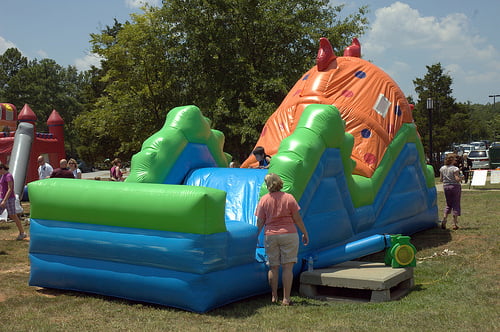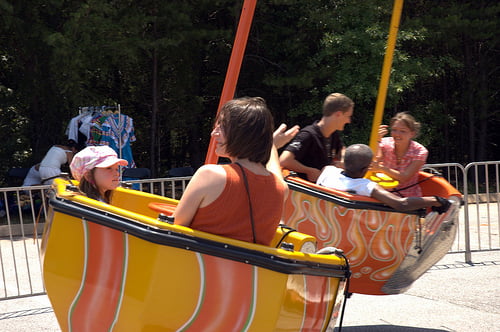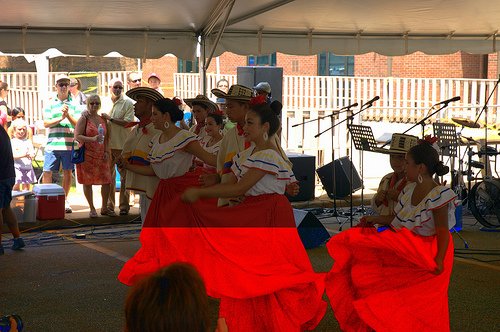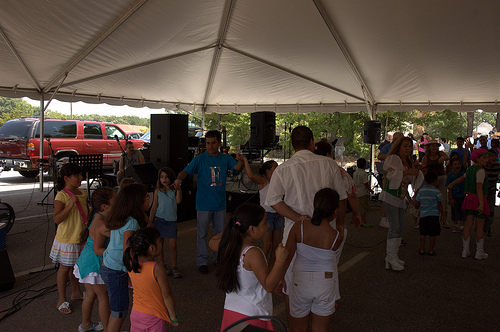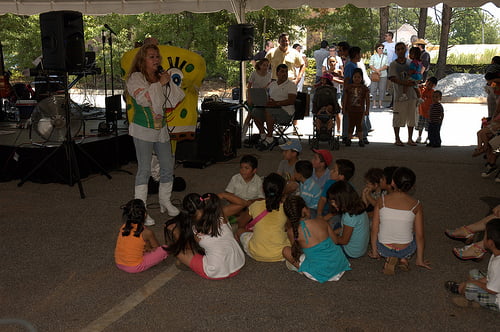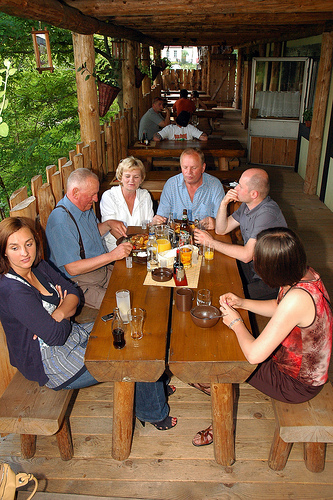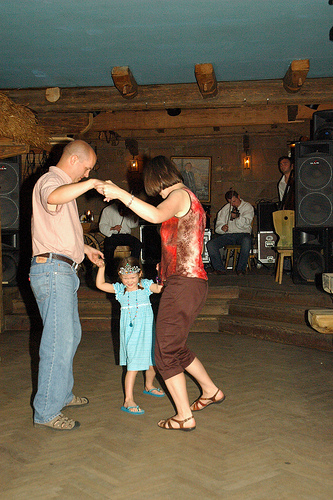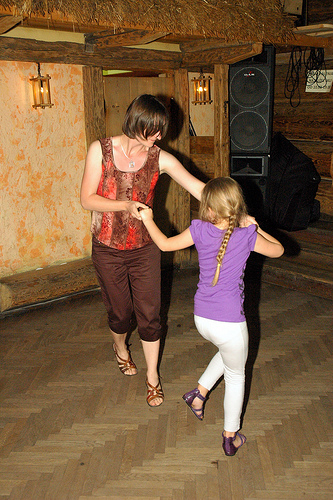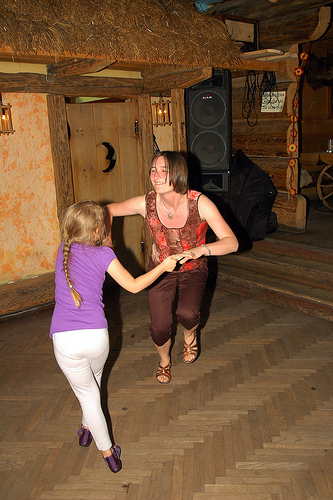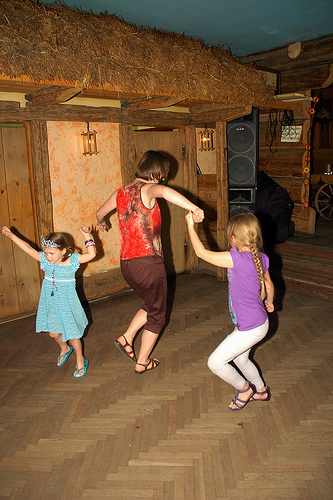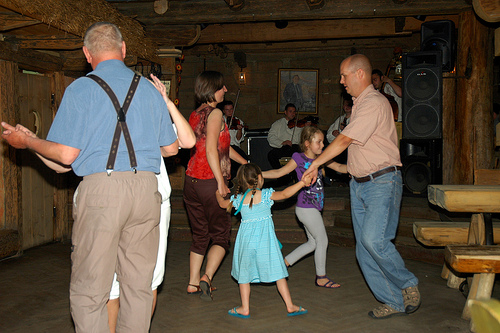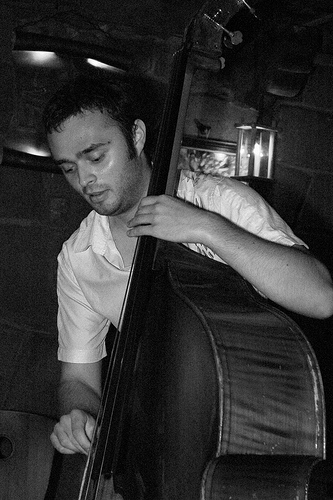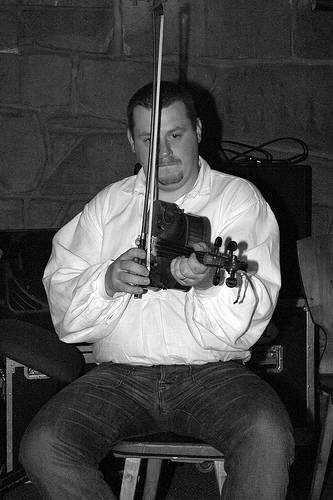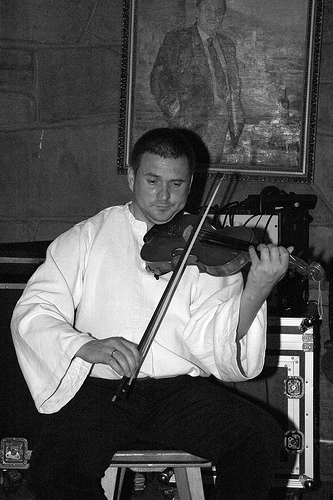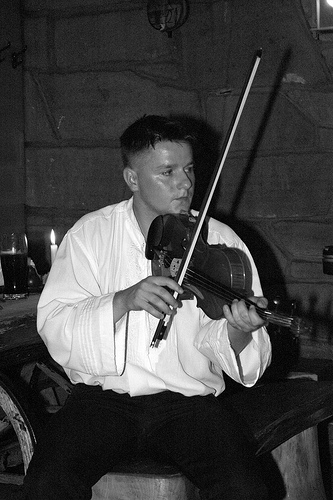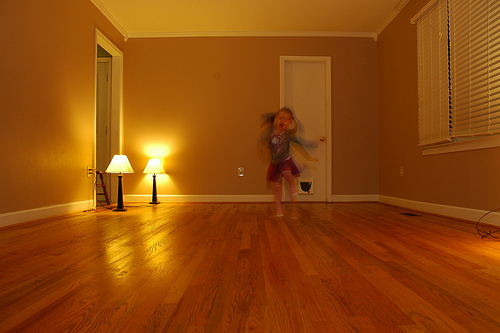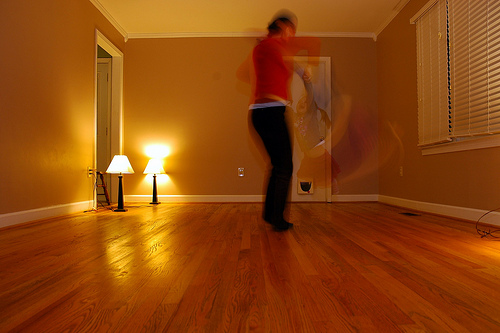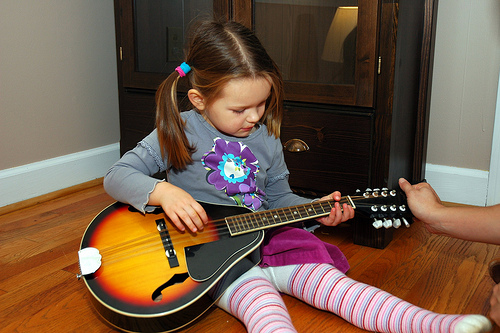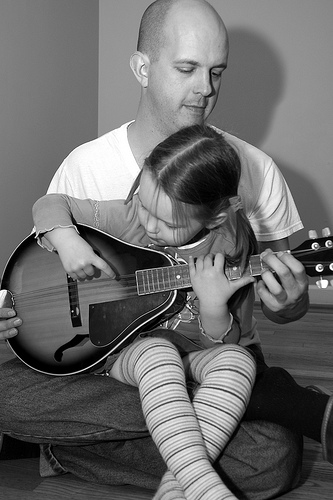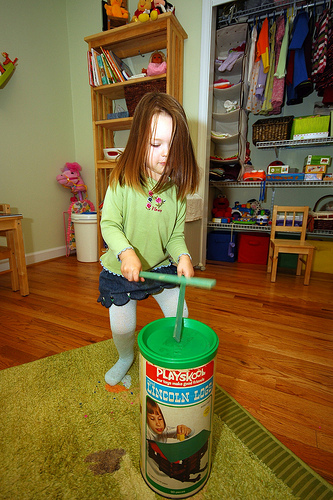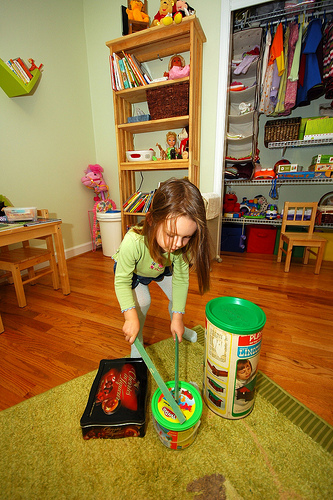#19 — Plainsong
My first, indirect exposure to Catholicism was in a friend’s living room in Knoxville, Tennessee sometime in the early 1990s. Several of us were staying over with this friends family, and as we sat talking that evening, she put on Enigma’s debut album, MCMXC a.D. It was the first time I’d really heard plainsong, though it was layered under so much sampling and shallow lyrics that I really didn’t know the power of what I was hearing. But I was curious: I wanted to hear pure chant, without all the drum machines and pan flute melodies.
It seemed such a simple idea: a single melody, often limited to a handful of individual tones, sung by dozens of voices. No harmonies; no differentiation whatsoever. Polyphonic choral music– the famous SATB — seemed overly complicated in comparison.
http://www.youtube.com/watch?v=d5p_U8J0iRQ&feature=related
#16 — Bach’s B Minor Mass
#6 — Polyphony
Sacred music is without a doubt one of the most beautiful things Catholicism has given then world, and polyphony is the most perfect form of that music. Five, ten, fifteen, even forty individual melodies blended into a single composition that can only be described as angelic. Â Strictly speaking, composers of sacred music did not “invent” polyphony, and many in the church at first balked, considering the harmonies superfluous. However, the vast majority of polyphony that I am familiar with is sacred in nature.
I first heard polyphony in “Man and the Arts,” a unique course I took as an undergrad that blended a historical overview of art, music, and philosophy. Our professor played for us a portion of Thomas Tallis’s “Spem in Alium,” a forty-part Renaissance motet, and I was instantly addicted.
Listening to this makes it difficult to believe that we are merely bags of fat and chemical reactions.
Dancing
The Girl loves dancing. We’ve known that for some time, and made videos and photos several times.
It’s such an odd thing for me, a complete non-dancer. She can hear music that she likes, and she’ll jump up and start dancing — in the kitchen, in the living room, in her room.
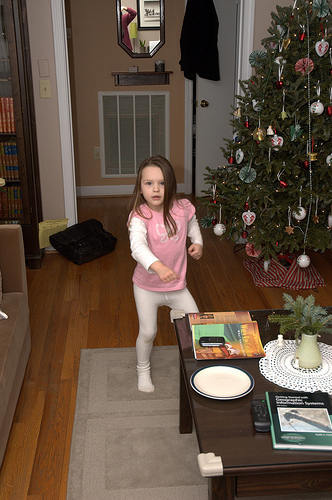
I imagine if any of her favorites came on the radio while we’re out shopping, she’d dance about there as well.
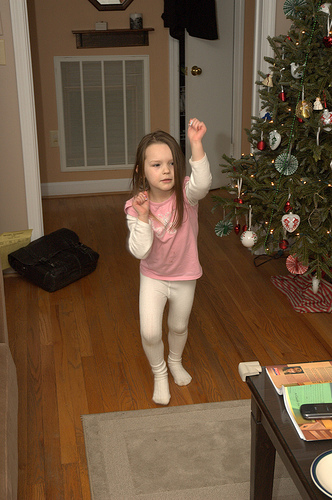
She dances to anything. K puts on Polish folk music and within minutes, the Girl has burst into the living room and is dancing. Anything by Chopin gets her swaying almost majestically.

Elvis Costello can get her feet moving so fast it looks likes she’s running in place.

It is the ultimate sign of a love of music.

Our hope is that it will last and deepen over the years.
Magdalena Kozena
I’ve been listening Magdalena Kozena singing Bach for close to two weeks now (since I purchased my first but certainly not last CD of hers).
Who knew she had such a sense of humor?
Sing, Sing a Song…
K grew up so close to Slovakia that it’s fairly easy to pick up Slovakian programming from her folks’ home. Indeed, that part of Poland used to be Slovakia: there’s still a weekly Mass said in Slovakian, and K’s father’s high school exit exam was in Slovakian.
The program itself has hints of the old communist form.
Festival
The church we attend is Saint Mary Magdalene Catholic Church, and since it was recently the Feast of Mary Magdalene, what else was there to do but have a festival? Never mind that the temperature was 101, with humidity that made it feel ten to fifteen degrees hotter — in spite of all risen mercury, the turn out was fairly impressive.
It did make for some challenges. The inflatables were hot to the touch — so hot, we were afraid L would burn her feet without socks, so we didn’t let her romp about on them. (After she touched one, she didn’t want to either.)
The other rides probably weren’t much better.
Due to the high attendance, though, I didn’t usually find out. I wasn’t too upset about missing the whirley ride, though. Dizziness mixed with heat would be potentially embarrassing. How odd: such rides rarely turned my stomach as a kid. As I get older, though, I get more sensitive, which is itself odd: the general trend in aging is to grow less sensitive to so many things.
As always, the highlight for the Girl was the dancing. L will dance — and has danced — to just about any music: bluegrass (one of her favorites), traditional Polish highlander music, Bach’s “English Suite No. 2”, the Grateful Dead, Sonny Stitt, etc.
One of the things I like about the Catholic church in America is how it tends to draw so many cultures into its community, and these communities often have a strong sense of their heritage, which they pass through the generations. It’s most evident with the Hispanic cultures, but that’s probably more a question of demographics than anything else.
Music by the Lake
It’s almost over: only a couple of concerts remaining, but we finally made it to Furman’s “Music By the Lake” free concert series tonight. It’s an odd crowd: college students who stick around for the summer, families, and literally bus loads of elderly from local nursing homes.

Of course, as soon as the music strikes up, the Girl wants to head to the lake and look at the ducks. We wander down, listening to the strange echo: enormous speakers in the clock tower transmit the concert over the entire campus, but there’s just enough time delay to make a cacophony of otherwise fine playing.

Even behind the stage, it’s noticeable. Not to mention annoying.

The best place: midway up. Good sound, and lots of room for the Girl to run around, dance, fall, and be a three-year-old.
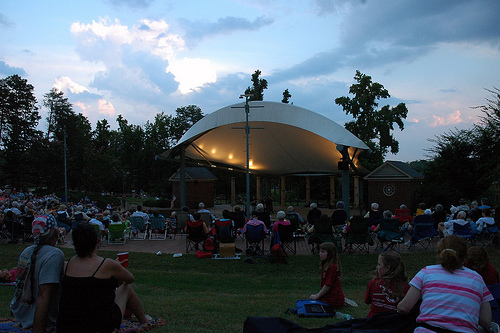
And there’s a lot of reason to dance tonight: the Andy Carlson Band is playing, and Andy Carlson can play a fiddle like no one I’ve ever heard. Classically trained (he’s a professor of violin, after all), the man brings a deep understanding of music along with phenomenal playing. It makes for bluegrass of a rare quality.
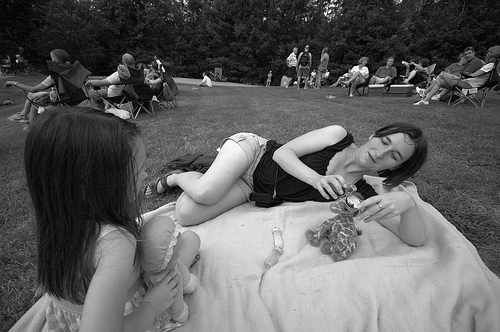
Of course, who can go to Furman and not take a picture of the clock tower?

In Motion
During K’s next-to-last night in Poland, we went out for a little family-and-friends party. I posted several pictures, but only now have I gotten around to the video.
Who could listen to this and sit still? Apparently, not many…
Girls Singing
The Girl loves to sing. It turns out her cousin does too, as does the daughter of her godmother.
Two Polish songs and a number in English about butterflies.
Party! (Again?)
K’s last full evening in Jablonka — what else to do but go for a little party? This one is a little different. For one, we’re going out, not staying in: less clean up. Second, we have live entertainment, an amazing string band (video coming later). Third, it’s a smaller group: more intimate. Finally, I’ve agreed not to be such a prude and drink a little. Which means, with live music, that I might be induced into dancing. Or I might shock everyone and initiate it.
It’s rare that I’m among the first in the room that makes it to the dance floor. It’s even rarer when I initiate it. There are obvious exceptions. Fortunately, I know the required components, and I can stay well away from them if I don’t feel like making a fool of myself.
One component, which is honestly optional, is a little bit of alcohol. It lowers inhibitions, and that warm feeling after one or two shots of vodka makes my toes twitch. Metaphorically speaking, of course.
Another component is having someone I really wish to dance with. K loves dancing, as does L, and they will dance with just about anyone, including solo dances. I take a more circumspect view of dancing. If I’ll be getting up in front of other people and wiggling my body in this or that odd, unnatural way, and perhaps enjoying it, it will have to be with someone who, at the very least, I like. Better yet, someone I love.
All that is to say I don’t love dancing.
K does.
K will dance with anyone. She’ll dance alone in our living room, tauntingly.
“You know you love this song,” she says with her bright eyes. “Why not dance?” I can give myriad excuses.
When she gets with someone else who’s equally crazy about dancing, the results are predictable and lovely:
Everyone is in a dancing mood. The only person who doesn’t get the dance he wants is Dziadek. He keeps asking L for a turn around the floor — and it would have literally been a turn for L — but she keeps denying him. Maybe she’s honing her skills; perhaps she’s just being a typical three-and-a-half-year-old.
At the heart of all the movement, and the number one component to getting me on the dance floor, is the live band. All trained in traditional styles, they have a flair for original touches of jazz, Gypsy, Jewish, and Eastern modes in their music. The result makes it difficult to sit still.
After filming several of their numbers (to be posted later, after I regain access to editing software), I take the bottle up to their table and pour a round or two for them.
“You guys are going to be on the Internet in a couple of weeks,” I laugh.
“On YouTube?” one asks.
“Of course.”
“What will be the title?” a second inquires.
“Really Good Music,” I tell him, but that is, as my father would say, a little tightened up from the original.
Video from Bluff
Watch especially for my favorite band at Bluff: Twilite Broadcasters. (2009 Bluff footage of the Broadcasters at goodmorningcapt1’s YouTube channel.)
https://youtube.com/watch?v=6GUebHik4t8%26hl%3Den_US%26fs%3D1%26
Part two is exclusively Betty Smith, one of the founders of the Bluff Mountain Festival and a living repository for folk music of the Appalachian mountains.
https://youtube.com/watch?v=TCXkFpU6G8Q%26hl%3Den_US%26fs%3D1%26
Bluff Mountain 2010
When ethnologist Cecil Sharp came to America during the First World War, he was established as an expert on the British folksong. Unable to support himself during the war (there was not much need for lecturing on folk music during the war), he was drawn by the thought of researching traditional English and Scottish songs that still survived in the American folk tradition.
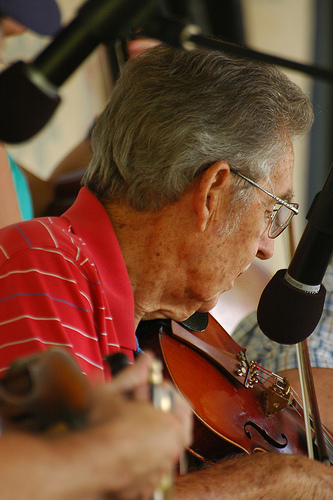
One of the places he stopped was Hot Springs, North Carolina. On August 26, 1919, Sharp wrote in his diary,
Last week I went to Hot Springs, where I got thirty beautiful songs from a single woman. The collecting goes on apace, and I have now noted 160 songs and ballads. Indeed, this field is a far more fertile one upon which to collect English folk songs than England itself. The cult of singing traditional songs is far more alive than it is in England or has been for fifty years or more. […] I must try and get up here by hook or crook next year again. It is work that for the sake of posterity must be done, and that without delay. (Source)
The lady who awed Sharp was Jane Gentry, and her songs live today in the memory of singers like Betty Smith, who is partially responsible for the Bluff Mountain Festival, a celebration of two of the strongest cultural binding agents: music and dance.
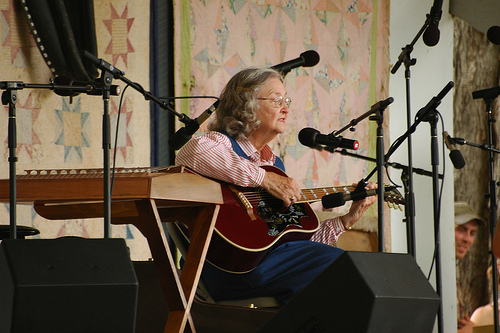
When I went to my first Polish wedding, I was shocked at the group singing that would spontaneously begin throughout the night. No instruments necessary, and actual singing talent is completely optional. All that’s required is the willingness, and after a few shots of vodka, everyone is willing. That’s how I used to look at it, but I’ve come to understand there’s something much deeper.
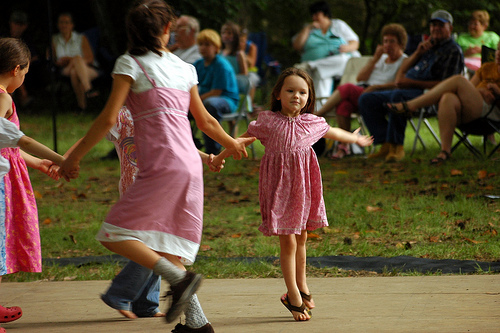
As blood moves the oxygen necessary to keep the body alive, so music and dance transport the oxygen needed to keep a culture healthy. That oxygen is simply a strong sense of regional identity, and music is only one part of that identity. Food, language, and religion are other important elements. These elements, however, are “celebrated” regularly, however: we eat and talk daily, and most people in the rural areas of America attend religious services at least weekly (often more regularly). So music needs specific occasions to be celebrated with the broader culture.

It’s to that end that residents of Madison County organize the annual Bluff Mountain Festival. Practitioners of bluegrass and old-timey music play (and discuss) songs that have been in the Appalachian collective memory for years (in some cases, literally centuries, as Cecil Sharp discovered), reminding all of us who don’t have daily contact with this music of its beauty and importance.
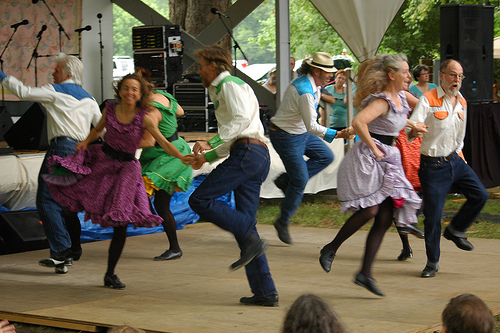
It’s getting more difficult to hold onto such traditions. The first difficulty arrived with the rise of mobility that characterized the twentieth century. Instead of staying in the same region as one’s parents, individuals began moving to cities where there were more economic possibilities. A second difficulty is the competition imported through mass media. Christina Aguilera is known outside of Appalachia; Betty Smith is not (at least on the same scale).
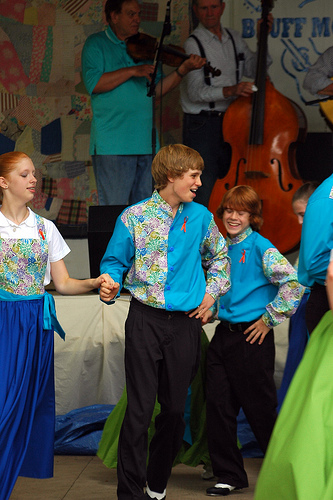
The music and traditions survive, though, and young people continue to value the culture their parents and grandparents pass along.
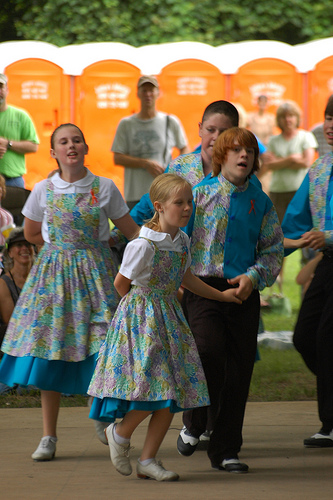
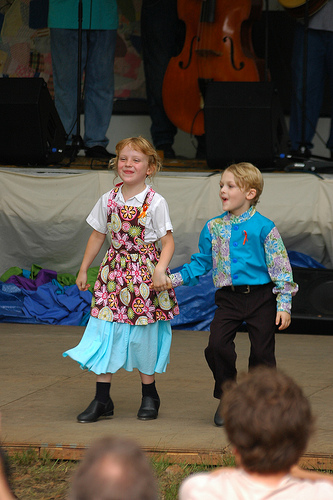
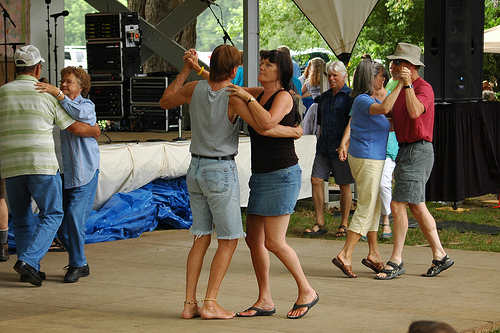
They’ll be singing these songs twenty years from now, when Aguilera is a tired pop star desperately fighting obscurity by performing with up-and-coming divas, and maybe making out with them on awards shows in a pathetic effort to stay on the tabloid front page.
Scottish Games
K and I often tend to find events by accident and then, becoming somewhat enthralled, work those events annually into our calendar of outings. In two weeks, we’ll be going to the Bluff Mountain festival in Hot Springs, North Carolina, and it has been an annual trip since we first went in June 2006.
We’ve added another one: the Greenville Scottish Games. We arrived late, but we were lucky: we made it for the best portion of the day. But first, some exploring.
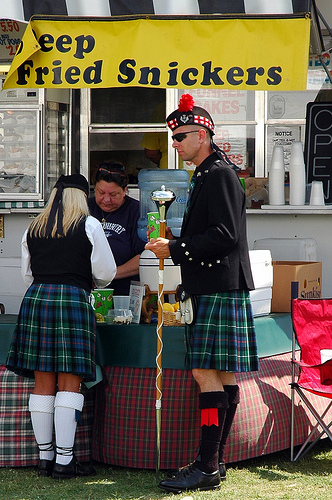
As with all festivals, food was everywhere. As with most festivals, non-standard dress was everywhere. Granted, some of the non-standard was actually standard. One can’t have a Scottish festival without the kilts, or the traditional Scottish favorite, deep fried Snickers.
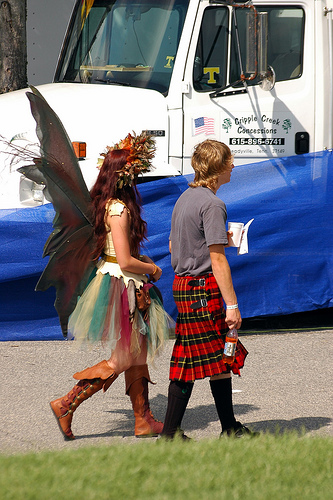
Some of the non-standard clothing seemed not necessarily to be “standard” anywhere but Celtic legends. And so I guess there, in a round-about kind of way, was the connection.
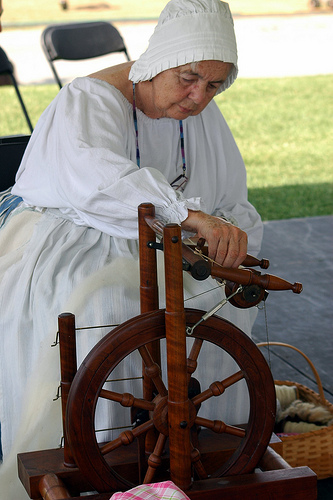
The day was filled old crafts and new styles.
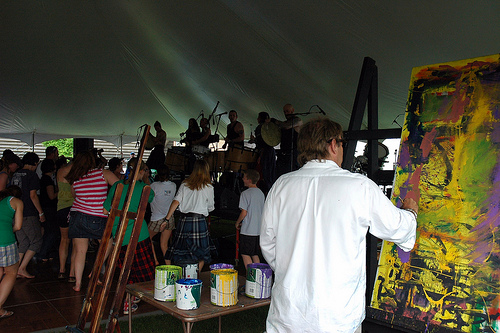
As Mystery Man dabbed paint, the Scottish band Albannach performed in the big tent. They struck me as a Scottish version of Kapela ze Wsi Warszawa: traditional instruments with somewhat modern rhythms.
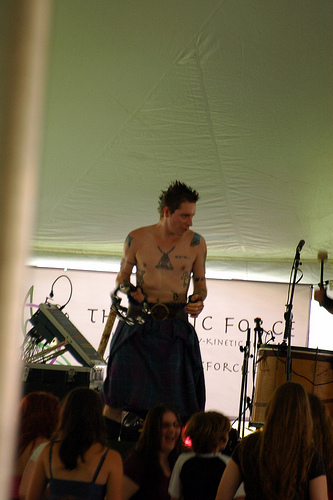
The highlight, of course, was the pipe and drum combination. We managed good last-minute seats and watched them all march in,
ready themselves,

perform for the judges,
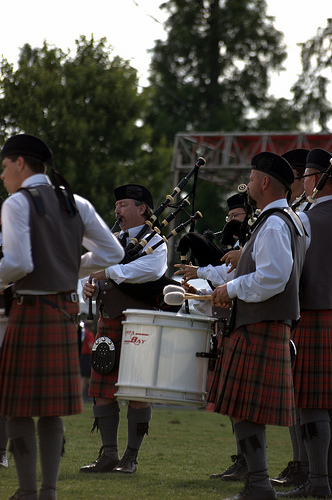
and march out.
At the end of the day, all bands came out and played.
Four hundred and some pipers and drummers.
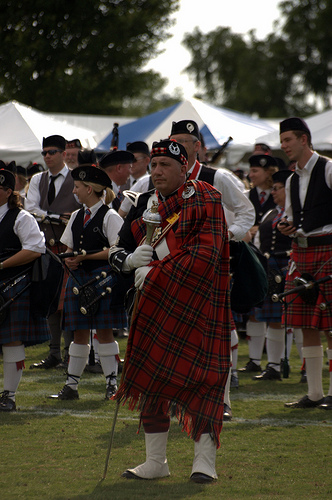
An amazing sight and sound.
Pathetique
When we got our tax return, K and I decided to invest a small amount into a piano. We considered a Steinway Concert Grand, but at close to a thousand pounds, we thought the floor might not agree. We settled for a digital, and the three of us have been playing away.
I’ve managed to pick up where I left off twenty-some years ago: the second movement to Beethoven’s Pathetique sonata.
I’ve been looking for different versions on YouTube.
Gould, in typical Gouldian fashion, turns it into something up-tempo. “Look how fast I can play this!”
The result is not adagio cantabile; it’s a march.
Daniel Barenboim gives a very thoughtful performance, but he leans a little too much on the sustain pedal.
For L’s part, she’s content just to bang. For now. We hope…
Emptiness
Little Drummer Girl
Minimalism
A Mongolian throat singer performing one of the most beautiful songs I’ve ever heard.
Simultaneously foreign and comforting, it somehow captures the Mongolia that exists in our imagination: harsh yet beautiful.
Similar to this is Tuvan throat singing — creating whistling harmonics while singing.
I could listen to this music endlessly, I think.

